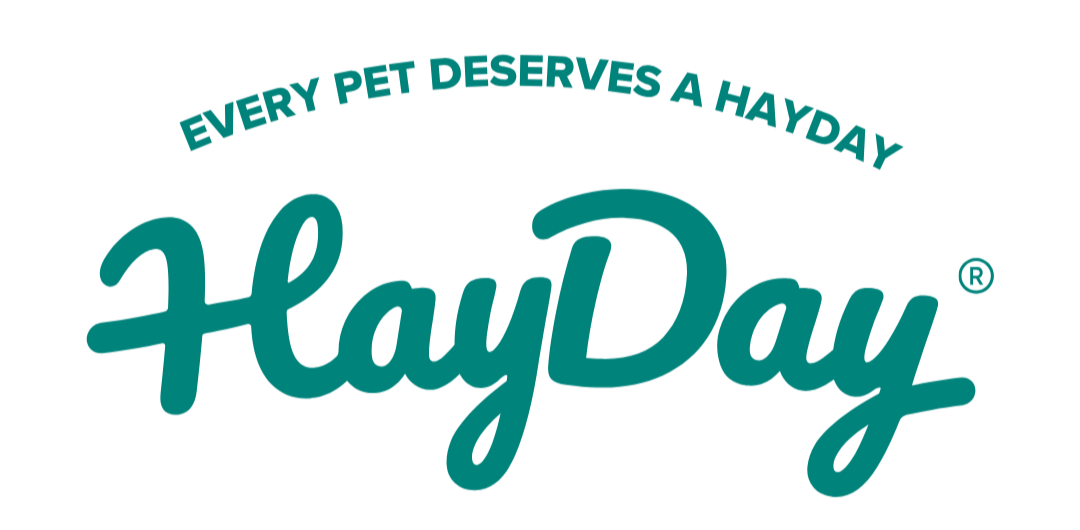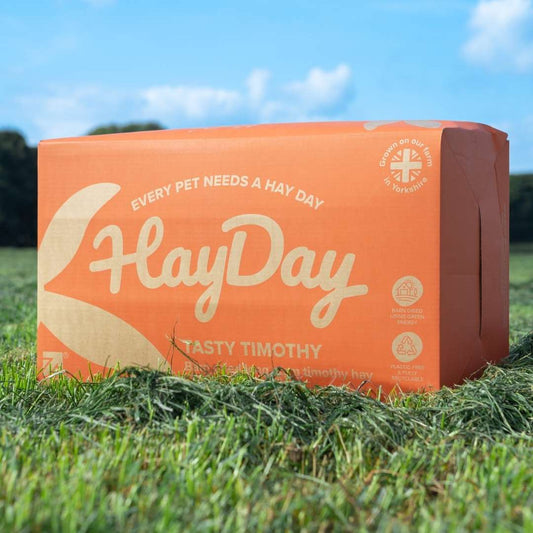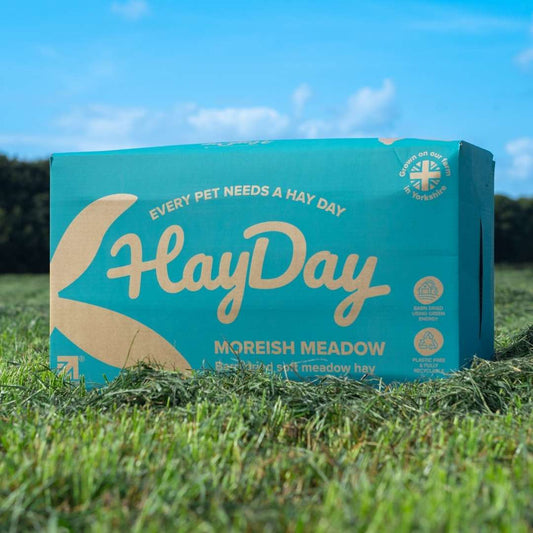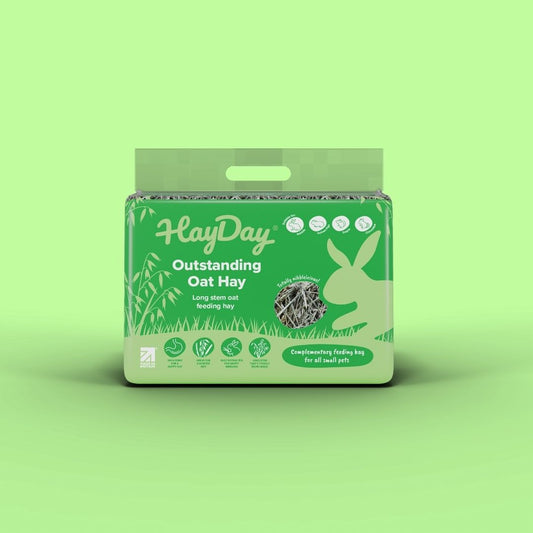To ensure chinchillas are as happy as they can be, chinchillas need regular dust baths to prevent skin ailments caused by wet fur due to their dense coat.
This essential guide from HayDay lays out the steps to give your fur baby a proper chinchilla dust bath, the products you need, and the best practices to follow for a healthy pet.
Learn the ins and outs of chinchilla dust baths to keep your little one clean and content.
Click here > Shop premium quality hay for your chinchillas!

Chinchilla Dust Bath Overview
-
Chinchilla dust baths are critical for fur and skin health by removing dirt and moisture and preventing skin ailments while providing mental enrichment through natural behaviour stimulation.
-
Use high-quality, natural volcanic ash for chinchilla dust baths, and ensure the bathhouse is sturdy, safe, and the right size for effective cleaning without risking the pet’s health.
-
Fine, ground pumice or silver sand is ideal for dust bathing, which is an important behaviour for chinchillas. Normal builders sand is not suitable (Saunders, 2009).
The different types of bathing dust available are:
-
Fuller’s earth is a type of clay. It is a nonplastic variety of kaolin containing an aluminum magnesium silicate. The name is derived from the ancient process of cleaning or fulling wool, to remove the oil and dirt particles, with a water of earth or clay.
-
Diatomaceous earth is a light friable silica containing material derived chiefly from the remains of diatoms (diatoms are any class of tiny planktons or algae that form colonies, and have silicified skeletons, that form diatomite).
-
Talc is a finely powdered native hydrous magnesium silicate.
Some individuals may be allergic to the commercial powders, and they make a dust bath preparation consisting of perfume-free talc powder (also known as talcum or French-chalk) and a dietetic grade cornstarch. Dietetic grades of cornstarch marketed as ‘‘Maizena’’ and ‘‘Mondamin’’ are best. Avoid using soluble- starch that is potato or corn starch treated with dilute hydrochloric acid.
Regularly monitor and adjust your chinchilla’s dust bathing routine to balance between keeping their fur clean and preventing skin dryness, with an ideal frequency usually between 2-4 times a week.
-
The Importance of Dust Baths for Chinchillas
Dust baths aren’t just a quirky behaviour; they’re a necessity for chinchillas.
Unlike other small pets such as guinea pigs and rabbits, Chinchillas have incredibly dense fur, with about 60 hairs per follicle, which makes them susceptible to skin ailments if they become wet (Saunders, 2009).
Regular water baths are a no-go for these critters. Instead, they rely on dust baths to keep their fur in top condition. These baths help chinchillas:
-
Remove dirt
-
Remove loose fur
-
Remove moisture
-
Preserve the velvety texture of their coats
Saunders, 2009; Donnelly and Brown, 2004
Dust baths for Happy Chinchillas
But dust baths aren’t just about cleanliness. They are like a fine sand that provide mental enrichment for chinchillas, allowing them to partake in a natural, enjoyable activity.
Why Do Chinchillas Need Dust Baths?
Beyond being an enjoyable activity for chinchillas, dust baths are vital to their health. Chinchilla dust baths absorb excess oil and moisture that can lead to skin infections.
Think of it as a dry shampoo and conditioner in one – it keeps their fur from becoming oily and matted, reducing the risk of skin problems.
While sand baths are not suitable for chinchillas, dust baths remain the ideal choice for their grooming needs.
Climate plays a role in a chinchilla’s dust bathing routine. Chinchillas living in more humid climates may need more frequent dust baths to keep their fur dry and healthy, preventing fungal growth and skin infections.
Chinchilla Natural Habitat and Dust Baths
In the wild, dust baths are a chinchilla’s primary method of grooming. They roll, flip, and shake in the dust, loosening unwanted dirt and oils, giving their fur a clean, soft feel.
This natural behavior continues in domesticated chinchillas, proving that you can take a chinchilla out of the wild, but you can’t take the wild out of a chinchilla!
Choosing the Right Dust Bath Products
Now that we understand why dust baths are important for chinchillas, let’s talk about how to give one. The first step is choosing the right dust bath products.
The quality of the products you use can significantly affect the effectiveness of the dust bath and your chinchilla’s health.
It’s important to select an appropriate container for the dust bath. The container should be stable and slightly larger than the chinchilla to allow for their dust acrobatics.
Various options can serve as suitable chinchilla dust bath containers, including a large metal tray, or anything that can hold a chinchilla safely with plenty of dust.
Larger dog bowls, litter trays and wooden/plastic trays are typically used. Some chinchilla owners will use cardboard boxes but these are often not sturdy enough and lack longevity!
Selecting High-Quality Chinchilla Dust
It’s essential to prioritise quality when choosing chinchilla dust. The best chinchilla dust is all-natural and:
-
Made from 100% natural volcanic ash
-
Without the addition of chemicals
-
Has a fine and silky texture, perfect for penetrating chinchilla fur and effectively absorbing oils and dirt.
Avoiding substances intended for other animals is important as they can be overly coarse and inappropriate for chinchilla fur.
Using the incorrect type of dust, such as sand, can lead to skin irritation and infections due to inadequate fur penetration and harsh texture.
Picking the Perfect Bath House
Selecting the correct dust bath house bears equal importance. It should be sturdy, tip-resistant, and easy to clean.
The container should be shallow enough for easy entry and exit yet deep enough to contain the rolling chinchilla with enough room to move freely. Materials like glass, ceramic, or metal are ideal, while plastic is less desirable due to the risk of the chinchilla chewing it.
A covered bath house can help minimise the spread of dust during the bath, and having an appropriate opening helps contain dust but also allows the chinchilla to enter and exit easily.
Many chinchilla owners prefer transparent bath houses to watch their pets enjoying their dust baths.
Step-by-Step Guide to Giving Your Chinchilla a Dust Bath
With your premium dust and ideal bath house ready, you can proceed to give your chinchilla a dust bath.
Dust baths should be offered to chinchillas about two to three times per week to avoid excessive drying of their skin.
The dust in the bath should be changed at least once a week or when it starts clumping or looking dirty.
Monitoring Your Chinchilla During the Bath
With the bath prepared, you can now observe your chinchilla as it bathes. Look for signs of excitement, indicating enjoyment, or signs of stress, suggesting discomfort with the dust bath.
Alertness to the following can signal health issues or discomfort, possibly requiring adjustments to the dust or bath routine:
-
Prolonged shaking
-
Sneezing
-
Excessive scratching or biting
-
Refusal to bathe
Supervise the chinchilla during the dust bath to ensure it is not eating the dust, which can be harmful, and watch for any unusual behaviour. Chinchillas should dust for about 5-10 minutes, and this typically involves a cycle of dusting, prancing, and shaking it off before repeating.
Chinchillas should be offered a dust bath twice a week under normal conditions. But the ideal frequency can vary based on individual needs and environmental factors.
Observation is important in determining the right schedule. Increase the frequency of dust baths if the chinchilla’s fur looks rough, feels damp, or seems oily, especially in humid conditions.
On the other hand, decrease the frequency if the chinchilla shows signs of dry, flaky skin, or if it is itching, indicating over-bathing.
Summary
In a nutshell, dust baths are an essential part of chinchilla care. They help keep the chinchilla’s fur clean, prevent skin infections, and provide mental enrichment.
Choosing high-quality dust and a suitable bath house, establishing a routine, and avoiding common mistakes are all crucial steps to ensure a successful dust bath.
Remember to monitor your chinchilla’s behaviour and adjust the routine as needed. With the right knowledge and tools, you can provide your chinchilla with a dust bath that not only keeps them healthy but also brings them immense joy.
Frequently Asked Questions
What happens if you don't give your chinchilla a dust bath?
Without a dust bath, a chinchilla's fur can become greasy and even damp, leading to potential skin problems. It's important to provide regular dust baths to maintain their cleanliness and skin health.
How often do you change a chinchilla dust bath?
Change the chinchilla dust bath at least once a week to prevent it from getting soiled and keep your pet's skin healthy. Offer the bath to your chinchilla 2-4 times a week for about 5-10 minutes each time.
Is chinchilla dust safe for humans?
Yes, quality chinchilla dust is safe for humans, but low-quality options may contain harmful substances that can cause respiratory issues and should be avoided.
What type of dust should I use for chinchilla dust baths?
You should use high-quality chinchilla dust made from 100% natural volcanic ash with a fine and silky texture for your chinchilla dust baths. It effectively absorbs oils and dirt to keep your chinchilla's fur clean and healthy.
Relevant Advice
How Long Can Chinchillas Live For?
References
Donnelly, T.M. and Brown, C.J. (2004) Guinea pig and chinchilla care and husbandry. Vet Clin Exot Anim, 7:351-373
Saunders, R. (2009) Veterinary care of chinchillas. In Practice, 31: 282-291





